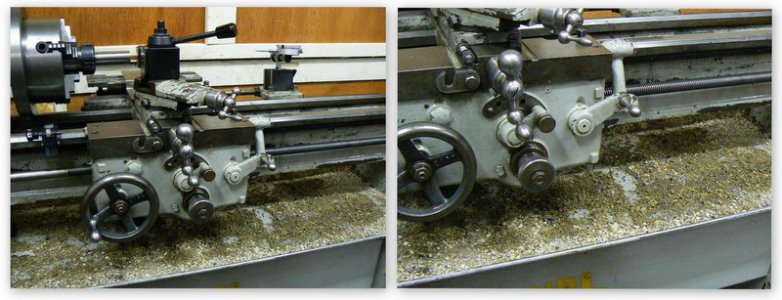- Joined
- Feb 5, 2015
- Messages
- 662
This may be old news but could be of interest to those with anal obsessive-compulsive personalities like mine LOL 
Chip pans on my lathes do what they are supposed to do: collecting chips and the fluids used in both the cutting process and the normal overflow from lubrication of the lathe (lubricants usually have no place to drain except the chip pan).
It’s not a big problem to clear out chips occasionally and then wipe down the chip pan to remove most of the fluids but it does take some time and the machine just looks “messy” in the meantime. Another option is to scatter a pound or two of kitty litter (cheap stuff) around the chip pans. This stuff absorbs cutting fluids and lubricants readily.

Occasionally, the litter can be re-arranged in the chip pan to expose new material in areas where fluids tend to concentrate. Chips are still scattered over the pan, of course. Most of my work involves working with steel and magnetic materials are easy to deal with. This is a tip that is well-known:
Insert a magnet inside a plastic grocery produce bag, a sandwich bag (or even a paper bag). Move the enclosed magnet over the chip pan and the chips will adhere to the outside of the plastic bag. Place the bag over a trash container and remove the magnet from the bag. The chips will fall into the trash container. The process can be repeated until the chip pan is as clean as you like.
(Non-ferrous chips are a different matter. This is a disadvantage when using kitty litter because your shop vac can’t suck up the aluminum chips without including the kitty litter. So chips must be removed by hand …)
Kitty litter absorbency seems to be adequate for several months before brushing it into the trash and adding a new layer.
Chip pans on my lathes do what they are supposed to do: collecting chips and the fluids used in both the cutting process and the normal overflow from lubrication of the lathe (lubricants usually have no place to drain except the chip pan).
It’s not a big problem to clear out chips occasionally and then wipe down the chip pan to remove most of the fluids but it does take some time and the machine just looks “messy” in the meantime. Another option is to scatter a pound or two of kitty litter (cheap stuff) around the chip pans. This stuff absorbs cutting fluids and lubricants readily.

Occasionally, the litter can be re-arranged in the chip pan to expose new material in areas where fluids tend to concentrate. Chips are still scattered over the pan, of course. Most of my work involves working with steel and magnetic materials are easy to deal with. This is a tip that is well-known:
Insert a magnet inside a plastic grocery produce bag, a sandwich bag (or even a paper bag). Move the enclosed magnet over the chip pan and the chips will adhere to the outside of the plastic bag. Place the bag over a trash container and remove the magnet from the bag. The chips will fall into the trash container. The process can be repeated until the chip pan is as clean as you like.
(Non-ferrous chips are a different matter. This is a disadvantage when using kitty litter because your shop vac can’t suck up the aluminum chips without including the kitty litter. So chips must be removed by hand …)
Kitty litter absorbency seems to be adequate for several months before brushing it into the trash and adding a new layer.
